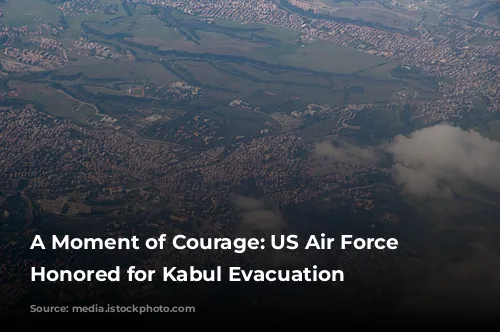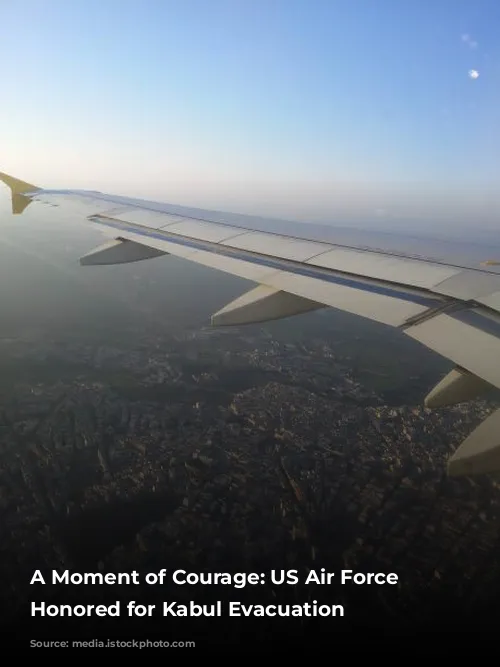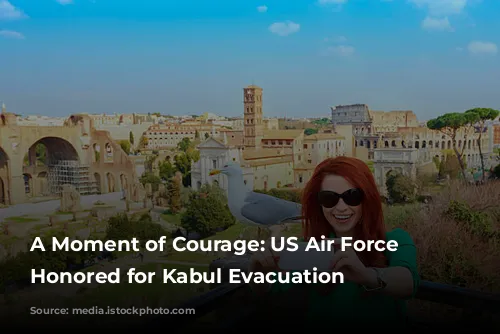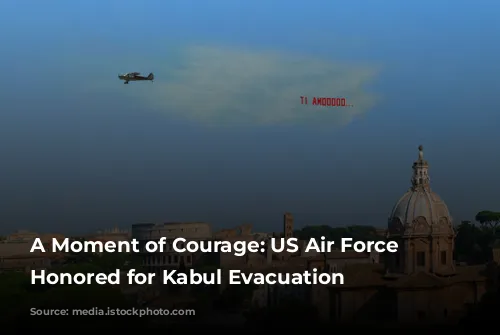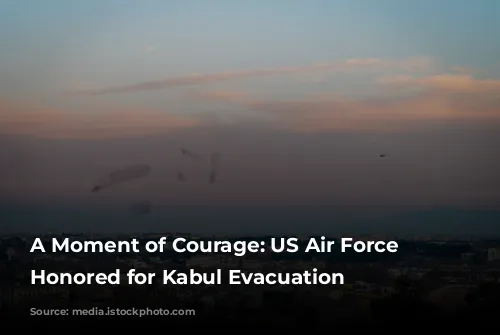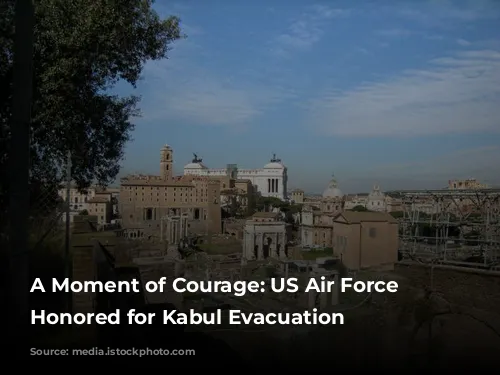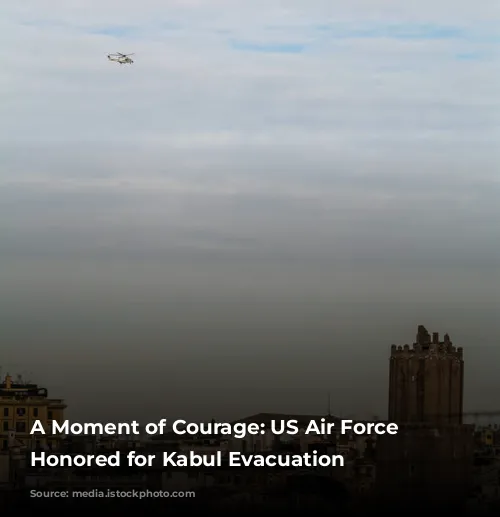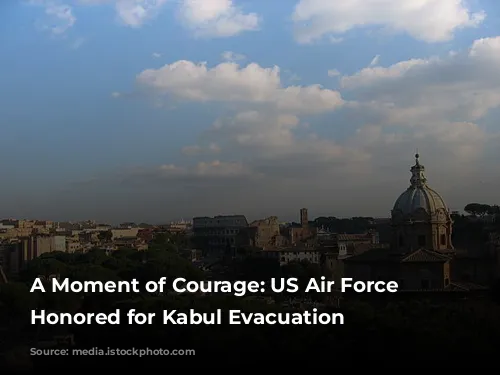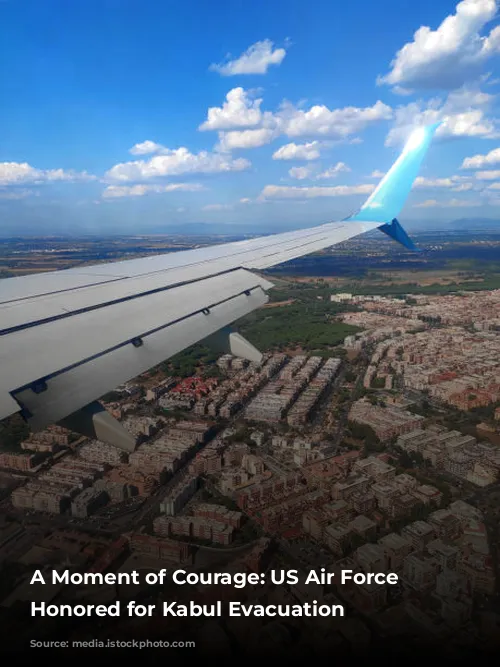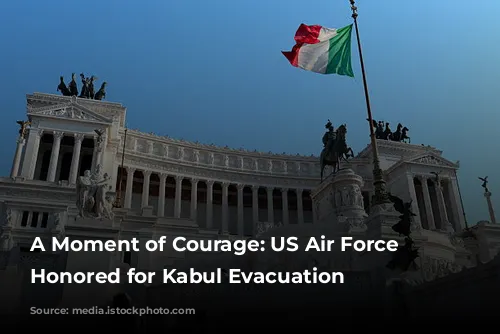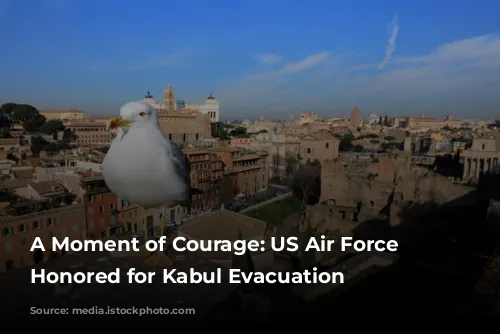The year was 2021, and the echoes of gunfire on an early August morning in Afghanistan jolted U.S. Air Force Captain James Ryan awake. His commander, Lt. Col. Scott Hardman, urgently informed him, “We have a situation, we need to go now.” The city of Kabul was on the verge of falling to the Taliban, and a group of U-28A Draco units from Florida had been tasked with supporting the evacuation of thousands of Americans.
Two years later, on November 17, 2023, these brave airmen received the Distinguished Flying Cross, the nation’s highest honor for aerial achievement. This momentous occasion marked a historic first for the U-28A community, as it was the inaugural award for a Draco aircrew.
The ceremony, presided over by Col. Allison Black, the 1st Special Operations Wing commander, took place inside the Freedom Hangar at Hurlburt Field. She eloquently expressed, “They were prepared to act, they were ready to save lives, and they answered the call of our nation. For its entire existence, the U-28 community has operated in the shadows, but today, there are no shadows.”

Facing Danger and Chaos: The Draco Crews’ Heroic Efforts
Three separate Draco teams, designated Draco 42 Dayline, Draco 43 Nightline, and Draco 43 Dayline, embarked on a two-day mission beginning on August 15, 2021. The crews rotated, ensuring continuous intelligence, reconnaissance, and surveillance support over the next 24 hours.
The Draco 42 Dayline crew faced an immediate threat as they prepared for their sortie to support the U.S. Embassy evacuation in Kabul. A fierce firefight broke out between Afghan security forces and enemy combatants, just a stone’s throw from their aircraft. Undeterred, Captain Max Arnold, a Draco pilot, explained their decision: “The gunfire and the situation at the embassy only made us more determined to do our jobs. All our training and instinct took over, and we almost acted subconsciously at that point.”
Moments into their flight, the Draco 42 team was targeted by a rocket fired by opposing forces. In a rapid response, the pilots skillfully executed a swift descent as the rocket whizzed past their aircraft. “That close call only strengthened our resolve to carry out the mission and counter the threats we faced,” Arnold remarked. “It truly set the tone for the rest of the flight.”
The Draco 42 team continued their critical mission, providing vital aerial support for the evacuation of the U.S. Embassy. After landing at a recovery airfield, they found themselves surrounded by a chaotic crowd of armed individuals. Later that evening, they were tasked with another sortie, this time supporting the evacuation efforts at Hamid Karzai International Airport.
The Draco 43 Nightline team, taking over from their comrades, faced a perilous journey as they soared through the night sky on August 15, 2021. Their U-28A came under fire from enemy anti-aircraft artillery, forcing them to engage in low-level defensive maneuvers to evade the barrage of threats.
As they flew above Hamid Karzai International Airport, Draco 43 served as the “eye in the sky,” diligently scanning the area below for any potential security breaches. What they witnessed was a scene of utter chaos, with thousands of Afghans surrounding the airfield, desperate to flee the country.
“There were throngs of people pushing onto the airfield,” described Captain Nicklaus Lutz, a combat systems officer. “It was a scene of utter chaos and pandemonium.”
The situation became even more precarious when the crew discovered that the air traffic control tower had been abandoned by its personnel. Lutz recalled, “That’s not a conversation you expect to have after takeoff, especially after being shot at. One of our biggest concerns was that when we landed, we would be on our own.”
With the control tower non-functional, the crew played a crucial role in de-conflicting inbound air traffic, primarily consisting of C-17 Globemaster III aircraft, which were assisting with the evacuation effort.
Amid the turmoil, a glimmer of hope emerged for the Draco 43 Nightline crew. “A group of U.S. Marines walked out onto the airfield with their arms outstretched,” Lutz recounted. “They cleared the airfield, and we realized that we would be able to land safely.”
After a harrowing flight lasting nearly an hour, Draco 43 Nightline finally touched down.
As they walked away from the aircraft that night, the reality of the events they had just witnessed sank in. “It dawned on us that we had nearly perished,” Lutz explained. “It was a dire situation. There were so many factors: being shot at during takeoff, losing our landing base, not knowing who was hostile or who was a refugee, and the constant threat of being shot at again. I was fortunate to be with such an incredible crew.”
The Draco 43 Dayline crew, beginning their mission as the sun began to rise on August 16, 2021, flew towards Hamid Karzai International Airport.
Captain Ryan, a combat systems officer, meticulously scanned the surrounding area from his position in the U-28A. “I remember hearing both pilots discuss how to avoid the threats around us,” Ryan described. “We didn’t have time to ponder the situation. We had a job to do, and we knew we needed to be there for our comrades on the ground.”
The airfield below was a scene of destruction, littered with abandoned burning vehicles, debris, and the remnants of the chaotic events that unfolded in the preceding hours.
The Draco 43 Dayline team worked tirelessly to maintain constant surveillance, providing crucial security information to the ground forces below. As dawn broke, the crowds surrounding the airfield’s perimeter grew larger and more desperate.
“People were piling up around the airfield, attempting to flee,” Ryan explained. “They eventually overwhelmed the barriers, and suddenly there were thousands of people rushing the airfield.”
To manage the escalating crowds, Draco 43 assisted with de-escalation and deterrence efforts until they reached critically low fuel levels. However, they realized that landing would be a daunting challenge in itself.
“There were simply too many people on the airfield,” Ryan said. “We were lining up on the taxiway, because there was nowhere else to land.”
As they prepared to land, a small opening on the runway appeared, and Draco 43 swiftly adjusted its course to avoid landing near the largest throngs of people. The crew quickly powered down their aircraft and secured their doors.
Shortly after landing, ground forces arrived to escort them through the chaotic scene on the airfield.
After nearly 24 hours of uninterrupted flying, the missions of Draco 42 and 43 were complete.
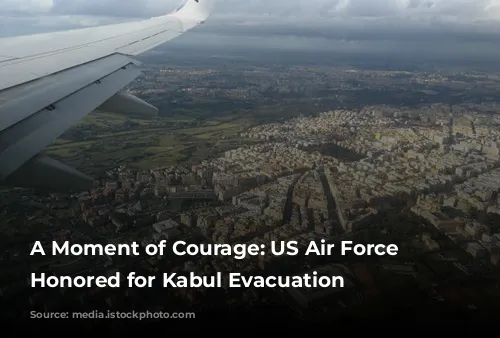
A Legacy of Teamwork and Courage
It wasn’t until after they returned home that the severity of the events they had experienced truly hit the crew. “It was when I got back and listened to our flight recordings that the seriousness of some of the moments really resonated with me,” Ryan stated, noting that the crews’ voices on the recordings remained surprisingly calm.
“In those moments, you could tell that our training kicked in,” Ryan added. “We were well-prepared and we worked together flawlessly. Every aspect of the U-28A mission is a collaborative effort, and I am incredibly fortunate and proud to have been surrounded by such exceptional aviators.”
For Captain Lutz, the award represented a testament to the crew’s unwavering ability to face challenges far exceeding their limits.
“It means being a true teammate,” Lutz explained. “We all understood that what we were doing was dangerous, and we chose to stay. I’m proud that I have a tangible moment where I was tested and was able to be part of something where my teammates knew they could rely on me, and I knew I could rely on them.”
The Distinguished Flying Cross awarded to the Draco crews is a lasting tribute to their bravery, professionalism, and unwavering commitment to their mission. They embodied the true spirit of teamwork and courage in the face of immense adversity, leaving a lasting mark on the annals of American military history. Their actions during the chaotic evacuation from Kabul serve as an inspiration for generations to come.
